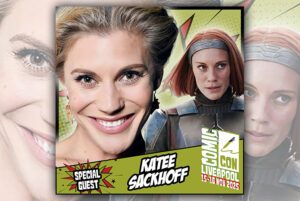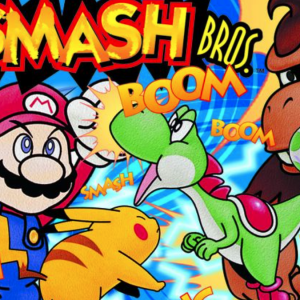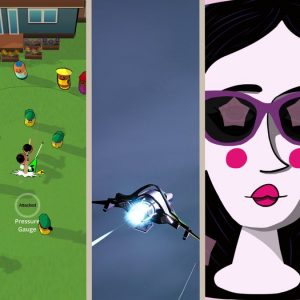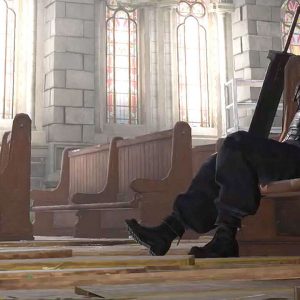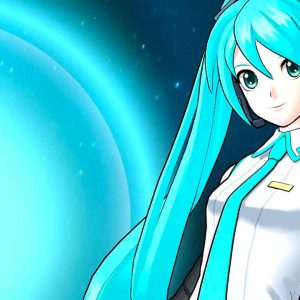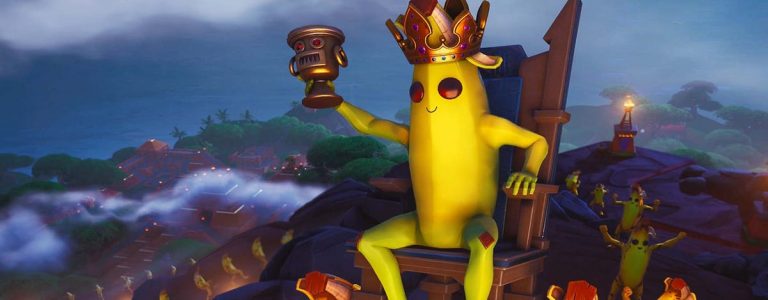One of Celeste’s images is also one of its most striking. Following an intense dream, Madeline awakens with tears in her eyes. She is laying in bed, looking pensive as she stares up at the ceiling. On the table is a bottle of pills. To her left is a childhood picture with her mother. You can read any number of emotions into that expression, but it’s apparent that she’s caught in a moment of reflection.
The transgender community, for its part, zeroed in on pointed cues like the trans flag on Madeline’s desk. More than a year later, Celeste creator Maddy Thorson finally acknowledged what was obvious to queer fans: Madeline is transgender.
“This feels painfully obvious to a lot of (mostly trans) people, and likewise it feels painfully obvious to me too, in retrospect. It has also become painfully obvious to me that I, myself, am trans,“ Thorson wrote in a 2020 blog post.
“But these are things that I was not aware of during the development of Celeste, where I was writing Madeline and speaking from her perspective. Creating Celeste with my friends helped me reach the point where I could realize this truth about myself. During Celeste’s development, I did not know that Madeline or myself were trans. During the Farewell DLC’s development, I began to form a hunch. Post-development, I now know that we both are.”
It was a massive moment not just for transgender gamers, but for queer gamers as a whole. It was a moment of true validation and visibility in what was broadly a mainstream game.
It’s been more than five years now since Celeste’s release and it’s tough to find a more personal and affecting representation of a trans woman’s quest for self-acceptance in games or basically anywhere else. Today, it’s one of the most popular and influential transgender games ever made, which is to say that it’s one of the only popular and influential transgender games. But that still counts for a lot in a world increasingly hostile to that community’s very existence.
‘We didn’t really have a plan’
Celeste wasn’t always meant to be one of the canonical games of the queer community. In the early days, it didn’t have much of a story at all.
“We didn’t really have a plan,” Thorson remembers. “I mean like, at first, we didn’t even have a story. We got to Chapter 3 before we even had the story coming in, and the story very much came from the mechanics. But then at a certain point, the story started becoming the heart of the game and we started turning it around, where everything else was taking cues from the story, which was very unusual for us in the way we made stuff until then.”
The story that eventually developed follows Madeline, a young woman trying to make her way to the top of Mt. Celeste with the help of Theo, a traveler from the faraway land of Seattle (Theo has an Instagram account, and like most things in Celeste, it’s very cute). Along the way she’s chased by a shadowy doppelganger named Badeline who harasses and mocks Madeline as she makes her way through ever more perilous challenges, which she negotiates by jumping, dodging, and flying past obstacles.
“
Above all, Celeste is a universal story about mental health. It’s about climbing the mountain and emerging whole. It’s not exclusively a transgender story, even if it has a special resonance for the trans community, especially trans women. It’s possible to draw many different meanings from its story, which is one reason it has proven so popular. First though, Thorson and her team had to find that story.
Going into Celeste, Thorson was still in the mindset of making a game similar to Towerfall, which had found success with local multiplayer fans in 2013. None of Celeste’s developers had an inkling that their “little game” as Thorson described it would go on to sell more than a million units while competing with God of War and Red Dead Redemption 2 for Game of the Year honors. Where many big-budget games can take six years or more to complete, Thorson’s team finished Celeste in just two.
The team began working on the project in 2016, which was around the time that Thorson encountered Lena Raine at the Game Developers Conference – the annual gathering of games industry professionals that takes place in San Francisco. Raine had been a freelancer for roughly a month at that point, having mainly served as what she describes an “add-on” interpreting other composers’ visions. Going independent was a risk, but Raine wanted to see if she could make it in the games industry. (Disclosure: Long before Raine worked on Celeste, she composed the themes for my various podcasts).
Raine got the job through a casual offer over Twitter DMs from Thorson, who said she thought her music would be a good fit for Celeste after listening to Singularity, a solo EP that Raine had released not long before.
“That was the style that they really latched onto,” Raine remembers. “It’s like listening to effectively what was my debut into exploring electronic music, and figuring out what I wanted to do with synths. Because before that EP, I really didn’t do a lot of electronic music. I did a lot of instrumental chamber stuff, I wrote for solo piano… guitar, and all that kind of stuff. And I really wanted to explore more sounds than just instruments that I didn’t have the money to hire people to play.”
“
That was the signature sound that Raine brought to Celeste, resulting in a soundtrack that would be streamed some 4 million times on Spotify by the end of 2018. The playful, exploratory, but haunted notes of First Steps backing the first stage made for a powerful first impression, echoing the memorable 8-bit and 16-bit music that had served as the soundtrack for gaming’s early years. Where more modern games, particularly ones developed by American studios, favor ambient or mood-setting soundtracks, Celeste’s music is at the forefront virtually from the beginning. It’s meant to be noticed.
Like the rest of the team, though, Raine had to find her way into Celeste’s overall themes. Her early work was “upbeat and peppy and a little bit more inspired by the Kirby games.” Raine was instructed to tone it down with an eye toward putting herself in Madeline’s shoes and focusing on the feeling of “standing at the very bottom of a room and looking at the puzzle of how to climb further.” It was a striking contrast to its platforming contemporaries like Super Meat Boy and N++, which in Raine’s words have a “frantic kind of pace to them.” It eventually became clear to Raine that Celeste’s story, and thus its music, had a clear emotional arc.
“I first got the hint at what the character themes and motivation were once we started getting into more of the cutscenes and some of the more introspective moments, because from the get-go, I had no idea necessarily the direction that I wanted to take it emotionally,” Raine says. “Writing the main theme and writing all this stuff, it was still evoking a lot of the feelings that were in the environment art in the first level. There was the ruined city and snowing… it was definitely evocative of a space… that initial ascent with first steps and with the first level, that set a groundwork for where I was going.”
Celeste was eventually released in early 2018. As with so much of the rest of the project’s development, its success felt almost serendipitous. Celeste had the benefit of being in the right place at the right time, arriving a little less than a year after the Nintendo Switch’s original launch. While it was released on several other platforms, it was most at home on Nintendo’s handheld, where its simple pixel graphics were able to shine. This being the early part of the Switch’s lifespan, it also didn’t have to fight as hard to stand out amid what would eventually become a deluge of indie releases on the platform.
Celeste went on to win praise from fans and critics alike, who lauded its distinctive art style, tight level design, and affecting storytelling. It quickly garnered a large and influential speedrunning community, who took pride in being able to beat its challenging B-Sides while dying as little as possible, but it also set the standard for accessibility with elements like Assist Mode. In short, it was a stunning achievement that was in many respects well ahead of its time.
“Celeste is a surprise masterpiece,” Tom Marks wrote in IGN’s Celeste review. “Its 2D platforming is some of the best and toughest since Super Meat Boy, with levels that are as challenging to figure out as they are satisfying to complete…But the greatest triumph of Celeste is that its best-in-class jumping and dashing is blended beautifully with an important and sincere story and an incredible soundtrack that make it a genuinely emotional game, even when your feet are planted firmly on the ground.”
‘She was just not a straight girl’
Thorson didn’t know she was transgender while working on Celeste. That came later. But Thorson tends to put a lot of herself into her writing, and her own conflicts with gender began to arise in Celeste’s story. In particular, it was apparent to the development team early on that Madeline was queer in some way, or as Raine puts it, “she was just not a straight girl.”
By the time work began on Celeste’s Farewell DLC, the ninth and final expansion that among other things introduced mechanics like Wavedashing and Wallbouncing, the team knew that Madeline was transgender. Raine, who is transgender herself, remembers artist Amora Bettany approaching her and asking whether it would be sensitively appropriate for her to have certain objects in her room.
“I was just like, ‘Yeah, those are really wonderful little details,’ that I think show what we want to say about the character without just making some big after-the-fact kind of statement because we were really sensitive to that kind of stuff. We didn’t want to say anything about a character that wasn’t actually presented in the text,” Raine remembers. “We really wanted to have the themes present for themselves.”
It wasn’t easy. Movies and television have a long and sordid history of presenting a character’s transgender identity as a shocking twist, which the development team worked diligently to avoid. As Thorson put it in her blog post a year later, the team didn’t want it to be a moment like Samus removing her helmet at the end of the original Metroid.
“
When the Farewell DLC released in 2019 and fans took notice of the clues in that iconic image, the development team remained silent, choosing to let the moment speak for itself. It wasn’t until a year later that Thorson chose to address the topic, in the process opening up about being trans herself.
“The Celeste community has wanted clarification on Madeline’s identity for a long time now, and I don’t blame anyone for wanting that, but the messy realities of my gender identity and coming out have meant that I needed time before I could talk openly about it,” Thorson wrote.
Immediately after the post, Thorson remembers “so much outpouring of support and love and personal stories of how they relate to Madeline and how it makes them so happy to know that she is canonically trans and that the story came from that kind of perspective.” Both Thorson and Raine say they continue to receive heartfelt messages to this day.
Thorson’s post wound up filtering throughout the trans community, and many picked it up for the first time. Among them was Eleanor, who had previously avoided Celeste due to its reputation for being difficult, which she tended to associate with negative memories of hyper-competitive behavior among boys (Note: We are using a pseudonym at Eleanor’s request). In the end though, she discovered that she was not only able to cope with Celeste’s difficulty – she loved it.
“I think Celeste broke through my defenses on that because there are those cute little postcards with the strawberries at the start of every level reminding you, it’s okay to take a break, keep trying,” she said, noting that on an especially bad day she will go and play through all of Farewell. “Your death counter is something to be proud of. And there’s the design choices of fudging the physics a little so you land in the right place or letting you restart at the start of a room every time instead of going back to a checkpoint. That kept me going.”
Eleanor sees Celeste’s journey as an elastic metaphor that can be read in many different ways, but she mainly focuses on the sense that Madeline is running from her past, saying that she heavily identifies with her anxiety of “being thought to be someone you aren’t and the terror of branching out into a new life when people are trying to hold you back into what you once were.”
“You get that cryptic call with someone who might be a family member who’s cut her off or might be an ex-partner, and that’s one of the only times we see outside the frame of the game in the entire thing,” she says. “Throughout you’re told you aren’t a mountain climber. No, you can’t do this. No, this isn’t something you’re capable of. This is not who you are. This is not who you’re allowed to be. It’s all about that tension between past and current self and the potential of what you could be versus what you are.”
She remembers a sense of relief when seeing the image at the end of Farewell.
“I feel like there’s often this spectrum between someone writing a trans character where their entire story is about their trans-ness, and that’s often good, but it shouldn’t be the only thing. Or a character gets Dumbledored [a reference to Harry Potter author J.K. Rowling revealing that Dumbledore was gay], like the author’s voice many years later” she says.
“Seeing that shot at the end of Farewell, it was just this relief of, ‘Oh, okay, this feels very true to her character.’ And it’s such a relief as an artist who works with trans narratives that are also not necessarily narratives just for trans people to see someone who has put so much thought into trying to hit this balance. It meant a lot to me.”
‘I still tear up a little bit when I see that’
Celeste ultimately has a happy ending – still a rarity in media featuring transgender people. Madeline finds closure after Granny’s death. She unites with Badeline and summits the mountain.
“
“It’s really beautiful,” Eleanor says. “I love the kind of quiet and gentle way that it makes clear that she just needs to love every part of herself, no matter how painful. And that’s the only thing that’s going to allow her to keep going. I still tear up a little bit when I see that. And at the same time, it’s still a scene that I find a little challenging, because I don’t think I love the Badeline in myself in quite that same way. I don’t know how to.”
It’s not an easy time for transgender people right now. Anti-transgender laws are sweeping the United States and other countries, and abuse is rampant on social media platforms like Twitter. Thorson says that Celeste reflects her belief that there are cisgender people who want to understand and care about transgender people.
“The one thing that makes me think that is the fact that so many cis people do relate to Celeste without even knowing that it’s a trans story, before we added that context,” Thorson says. “So that gives me hope, personally, that we aren’t these sort of aliens that are completely different where we’re just people and our stories are relatable. Maybe not in the details, but in the feelings and the human experience.”
huge congratulations to the whole Celeste Strawberry Jam team for launching their ridiculously huge fan compilation today 🤍
they released FIVE whole albums of music from the mod project & all profits go to Trans Lifeline, so you know what to do~https://t.co/tkf0NEqkld
— lena ⭐ raine (@kuraine) February 17, 2023
She and Raine both hope that transgender people can find refuge in the transgender community, which remains highly active to this day. Earlier this year, a team of more than 350 contributors came together to release the Strawberry Jam mod, a collection featuring more than 111 maps with original mechanics, art, and music. Thorson describes the effort as “the most flattering thing possible.”
“
Thorson is less optimistic about other games, saying that she’s become disillusioned with representation in AAA games, many of which proudly tout LGBTQIA+ characters who are only identified as such in their biographies. Either that, or they’re one-dimensional sops for the transgender community, as was the case with Hogwarts Legacy’s Sirona Ryan, who was widely panned as a simplistic representation of trans pathos.
“I think for true representation, it’s only ever going to come from indie games. You’re not going to get a game written from a trans perspective from Blizzard or whoever. It’s just not going to happen. They’ll have their token trans character and they’ll stop doing harmful tropes, and that’s the best we can hope for, I think,” she says, adding that she thinks it’s at least good that some companies aren’t being actively harmful. “But yeah, I would look to indie games if you want to hear a trans story with some actual soul to it.”
Pressed for examples, she points to Get in the Car, Loser, an RPG about lesbian adventurers on a roadtrip with an angel, and Super Lesbian Animal RPG, which is about “love, anxiety, and fighting funny looking monsters in dungeons.” Other games like Tell Me Why have also centered around queer and trans characters.
What ultimately separates Celeste is that it’s transgender art from transgender creators with a mainstream following. That’s rare in any space, let alone gaming. It does more than center Madeline as a transgender character, it delves deep into her psyche – into her fears, her dreams, her insecurities.
Raine recalls an oft-discussed monologue that she recorded and reversed for one of the game’s tracks, titled In the Mirror. Seeking a good recording environment, she went into a closet and began talking to herself. In hindsight, she says, it felt like a potent metaphor.
“I was just reflecting on the themes of that level… I was monologuing as a means of a hidden message, just to have some sort of spooky reverse thing happening in the music track. But I really did reflect on those things, and I really was feeling the themes of the game. Because who doesn’t have some sort of experience that they can relate to with that?”
Kat Bailey is IGN’s News Director as well as co-host of Nintendo Voice Chat.
For more: Buy Celeste on Nintendo and see the Celeste Walkthrough.




